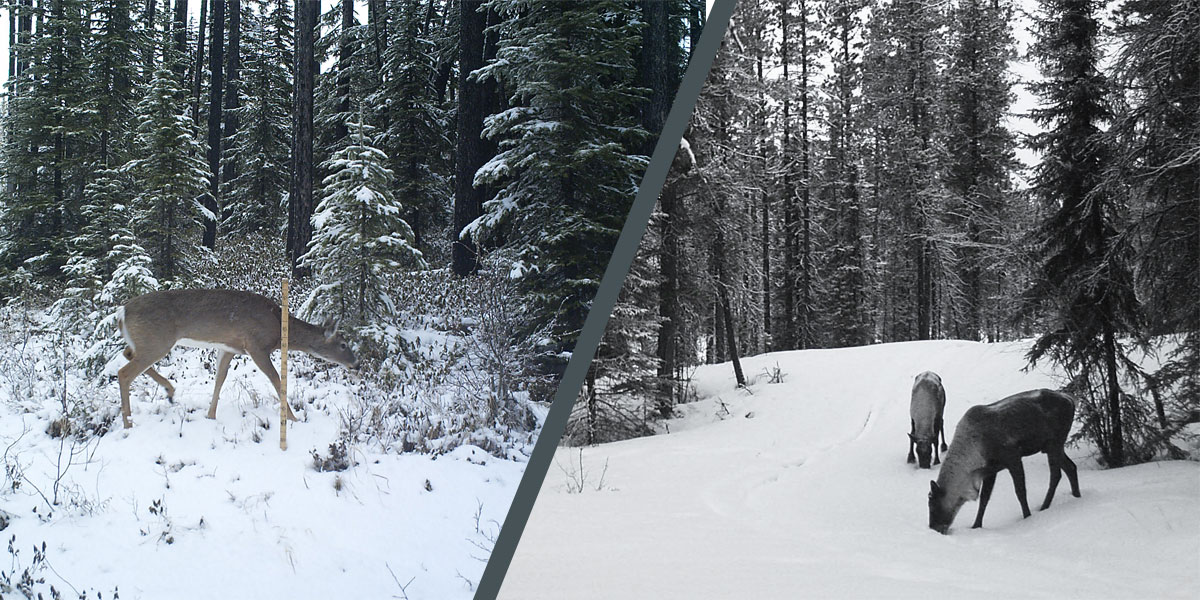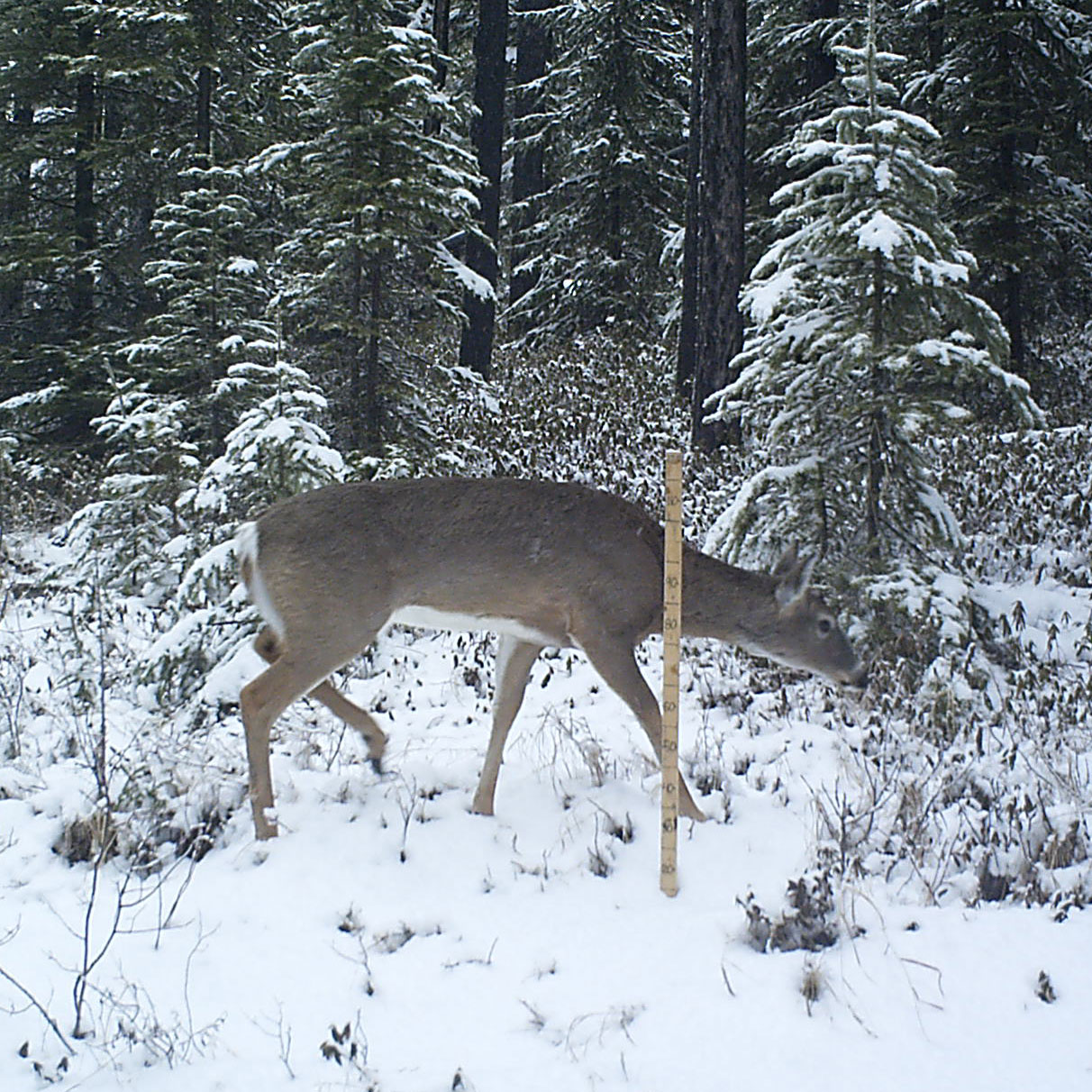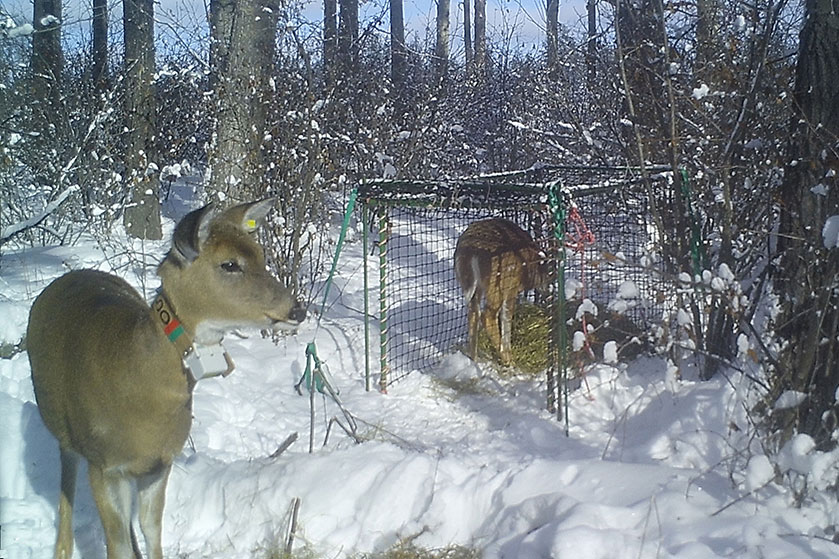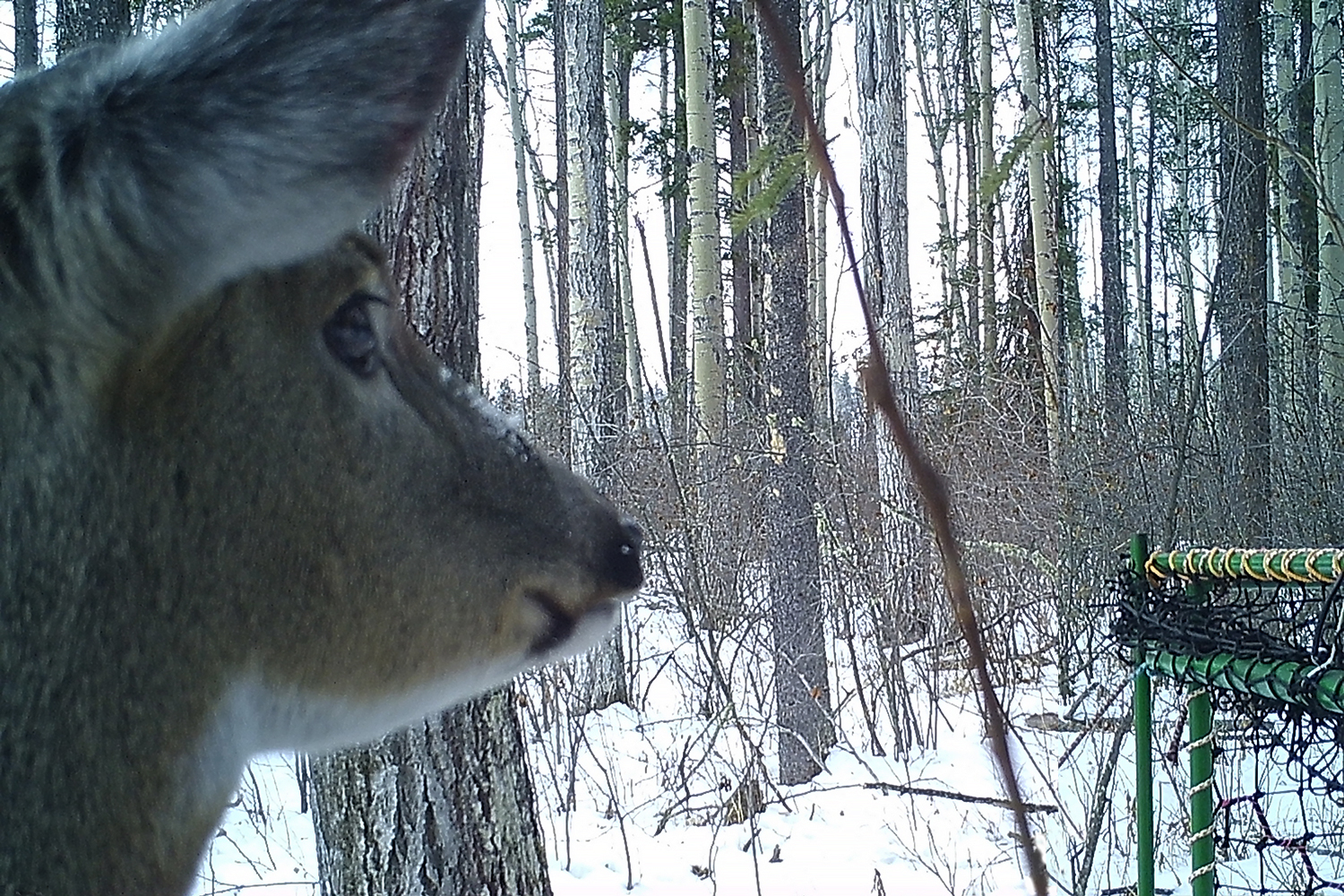
Resource Use of Mountain Caribou, White-tailed Deer, and other Sympatric Ungulates in West-central Alberta
Deer, moose, and elk are increasing in distribution and abundance within caribou ranges in Alberta, resulting in increased populations of shared predators like wolves, cougars, or bears. This apparent competition raises the risk of predation for caribou, resulting in population declines. White-tailed deer are increasing across caribou ranges, but little is known about their resource use and effect on threatened caribou.
This Master’s project, led by Suzanne Stevenson and supervised by Dr. Chris Johnson at the University of Northern British Columbia, was carried out in collaboration with the fRI Research Caribou Program. Stevenson used GPS collar data to create summer and winter RSFs for white-tailed deer for the first time in west-central Alberta. She then compared these with caribou RSFs to understand spatial overlap that may increase apparent competition between these species. Additionally, Stevenson used DNA metabarcoding from the fecal pellets of moose, elk, caribou, mule deer, and white-tailed deer to compare their winter diets. This is the first such information on white-tailed deer diet in Alberta.
Among many important findings, the study identified human disturbance and landscape attributes that contribute to spatial overlap between white-tailed deer and caribou. In particular, both species use mature conifer in the winter. While all five ungulate species share certain forage species, there is low overlap of the abundance of each plant food between each species. More results are discussed in the related publications.














